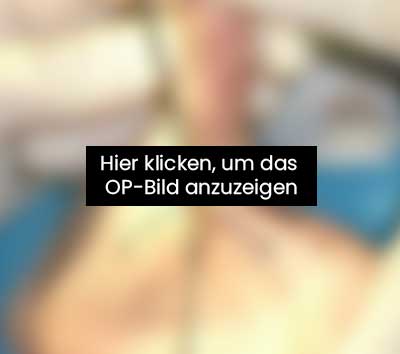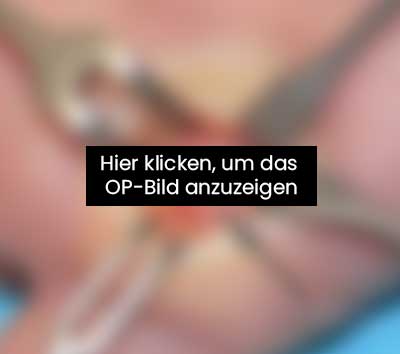In the case of the snapping finger, also known as the jumping finger, swelling of the flexor tendon sheath (tenosynovitis) is usually responsible for the relative tightness of the first ring ligament.
The tightness leads to a rubbing effect, which in turn leads to increased tendinitis.
The tendon sheath may become nodular and the tendon itself may even thicken. Both changes impede the gliding of the flexor tendons.
If the thickening of the tendon is advanced, the finger locks during extension and/or flexion. Only when force is applied does it jerk into the end position, as the tendon knot overcomes the resistance of the annular ligament – hence the common term “snap finger” in hand surgery.
The jumping finger can rarely be congenital and can lead to a jumping phenomenon even in infants. This almost always affects the thumb (pollex flexus congenitus, snapping thumb) and is caused by a thickening of the tendon.
Contents
Yuveo Clinic
Special features of the snap finger treatment
The initial stage with slight pressure and movement pain in the area of the first annular ligament is often not taken seriously and conservative treatment is therefore usually started late.
Causes
Complaints
Conservative therapy
Snap finger surgery
The snap finger can be treated with lasting success by an operation called ring ligament splitting. This involves severing the first ring ligament.
Our team of hand surgeons in Düsseldorf can perform this procedure on an outpatient basis and under local anesthesia.
We make a small incision about 1.5 cm long at the level of the first annular ligament. When exposing the ligament, the two finger nerves must be spared. We cut the ligament and, if necessary, remove part of it from the middle to prevent it from growing together again.
If the tendon sheath is clearly inflamed, we have to remove part of the tendon sheath (partial synovialectomy).
If it is more pronounced, this can also mean an extension of the incision, which is rare with the classic jumping finger.
This partial synovialectomy (removal of part of the tendon sheath) must be performed more frequently in rheumatoid patients.
Through the operation, we can eliminate the ring ligament tightness at the hand surgery center in Düsseldorf. The flexor tendon can glide better again and recovery of the irritation is pre-programmed.
Frequently asked questions about snap finger therapy
What are the causes of jumping finger?
Sudden or chronic overload
… are the most common causes. It is not uncommon for those affected to have been involved in moving house or have done a lot of work in the garden in spring. As our hand surgeons in Düsseldorf know, it is not uncommon for jumping fingers to be caused by chronic overuse and incorrect strain at work.
Injuries to the hand
… can lead to swelling of the tendon sheaths, constriction of the annular ligament and, secondarily, to a snapping finger. Even minor injuries, such as strains and bruises, are often the trigger.
Overleg
A ganglion, which is located on the annular ligament and has its starting point in the tendon sheath, is also sometimes the cause of the rapid finger. In hand surgery, these overbones are also called tendon sheath hygromas.
Rheumatism: Inflammatory rheumatic diseases
… favor the clinical picture. In general, tendon sheath inflammation and joint irritation are chronic in this group of patients.
Osteoarthritis
… (commonly known as rheumatism) is a wear and tear of the joints and can provoke a jumping finger in a similar way to inflammatory rheumatism.
Congenital
The typical case is pollex flexus congenitus, the infantile annular ligament stenosis, which usually results from a narrowing below the annular ligament rather than from a thickening of the tendon.
Medication
… is a drug for the treatment of breast cancer and can lead to a rapid finger in 0.01-0.1 % of cases.
Anatomy
The flexor tendons are held close to the bone by annular ligaments to ensure good redirection of force during flexion. There are four ring ligaments on the long fingers that are responsible for this. The first ring ligament, which plays an important role in the snapping finger, is fixed at the level of the heads of the metacarpal bones.
What are the typical symptoms of snap finger?
In the early stages, snap finger is often characterized by pressure and/or movement pain in the area of the first annular ligament.
Later, movement and weight-bearing of the affected fingers becomes difficult and, in the final stage, no longer possible.
The finger popping described above is usually not present at the beginning of the disease. In some cases, however, it may also be present without pain.
The initial stage with mild pain is often misjudged and conservative treatment is therefore often only started very late.
As a result, patients may not present to a hand surgeon until the snap finger is at an advanced stage, at which point surgery can no longer be avoided.
In a few cases, the pain radiates to the extensor side of the affected finger. When our hand surgery patients in Düsseldorf report such complaints, we always test for pain by applying pressure to the ring ligament.
This radiating pain usually disappears as a result of the treatment of the flap finger.
How is spring finger treatment performed without surgery at the hand surgery center in Düsseldorf?
In the early stages, snapping finger can often be treated with corticoids(anti-inflammatory medication). At our clinic in Düsseldorf, we inject this directly into the area of the first ring ligament and near the tendon with or without local anesthesia.
By reducing the inflammatory process and reducing swelling, the friction of the tendon / tendon sheath on the annular ligament is reduced.
Unfortunately, the therapeutic success is not always permanent. With renewed swelling of the tendon gliding tissue, the snapping finger occurs again.
If the corticoids are injected too frequently and possibly into the tendon, this can weaken the tendon, which can lead to tendon ruptures.
What does our team of hand surgeons in Düsseldorf recommend after the operation?
After the snap finger operation, we will apply a absorbent cotton bandage for about 2-7 days, after which a plaster is sufficient.
Independent movement exercises should be performed from the 3rd to 5th day in order to prevent the flexor tendon from sticking to the resulting scar.
We can remove the stitches approx. 2 weeks after the procedure.
Scar discomfort and swelling after weight bearing can sometimes persist for 4 to 6 weeks after the snap finger operation.
In some cases, renewed swelling can be observed when patients start to exercise again. Our team of hand surgeons would like to draw attention to the need to “shift down a gear” in good time to prevent long-term swelling and pain.
Fact check
- Practitioners: Dr. Schumann and Dr. Schumann-Averkiou
- Anesthesia: local anesthesia
- Hospitalization: outpatient
- Aftercare: Cotton wool dressing for 2 to 7 days,
- Remove stitches: after 2 weeks
- Movement exercises: Carefully from the 3rd to 5th day after surgery
Related topics and further information
Technical terms:
Tendovaginitis stenosans = annular ligament stenosis = snapping finger Related topics:



